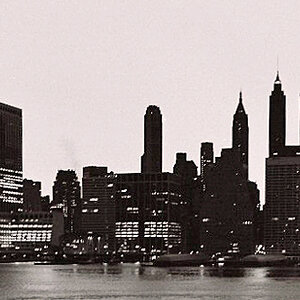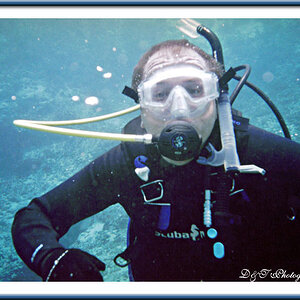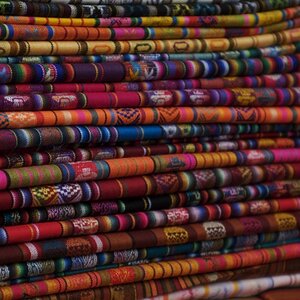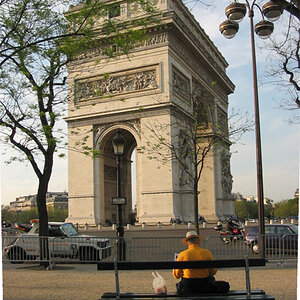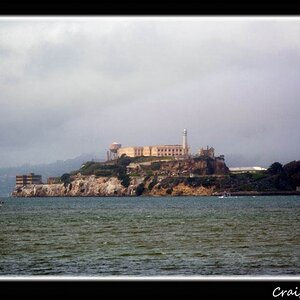Navigation
Install the app
How to install the app on iOS
Follow along with the video below to see how to install our site as a web app on your home screen.

Note: This feature currently requires accessing the site using the built-in Safari browser.
More options
You are using an out of date browser. It may not display this or other websites correctly.
You should upgrade or use an alternative browser.
You should upgrade or use an alternative browser.
What you see vs How you feel?
- Thread starter cbarnard7
- Start date
Derrel
Mr. Rain Cloud
- Joined
- Jul 23, 2009
- Messages
- 48,225
- Reaction score
- 18,941
- Location
- USA
- Website
- www.pbase.com
- Can others edit my Photos
- Photos OK to edit
How do you photoshop sexy and sophisticated into a picture of a tree?
HERE you go, runnah....your question answered, complete with screen shots and software suggestions, step by step. This article explains how to take an average capture and process the chit out of it to make a nice pitcher.
Tree On A Hill
- Joined
- Oct 16, 2012
- Messages
- 14,632
- Reaction score
- 7,562
- Can others edit my Photos
- Photos OK to edit
How do you photoshop sexy and sophisticated into a picture of a tree?
HERE you go, runnah....your question answered, complete with screen shots and software suggestions, step by step. This article explains how to take an average capture and process the chit out of it to make a nice pitcher.
Tree On A Hill
Needs more sexy.
Murray Bloom
No longer a newbie, moving up!
- Joined
- Jun 6, 2007
- Messages
- 440
- Reaction score
- 85
- Location
- Baltimore, MD
- Website
- www.murraybloomphoto.com
- Can others edit my Photos
- Photos NOT OK to edit
If I had to say, my images are more about how I feel during post-processing than anything else. In the digital age, what's 'real' anymore, anyway?
Derrel
Mr. Rain Cloud
- Joined
- Jul 23, 2009
- Messages
- 48,225
- Reaction score
- 18,941
- Location
- USA
- Website
- www.pbase.com
- Can others edit my Photos
- Photos OK to edit
runnah said:Needs more sexy.
Ummm, I think Nik Software has a plug-in for that. And surely there's some Photoshop actions for sale on-line someplace, and also some for Lightroom.
- Joined
- Jun 9, 2013
- Messages
- 20,580
- Reaction score
- 12,709
- Website
- moderndinosaur.wordpress.com
- Can others edit my Photos
- Photos NOT OK to edit
How do you photoshop sexy and sophisticated into a picture of a tree?
HERE you go, runnah....your question answered, complete with screen shots and software suggestions, step by step. This article explains how to take an average capture and process the chit out of it to make a nice pitcher.
Tree On A Hill
That is exactly the kind of picture I dislike. In fact...okay, I'll say it. I hate it. I really hate it. I liked the original so much better.
peter27
TPF Noob!
- Joined
- Mar 21, 2013
- Messages
- 668
- Reaction score
- 196
I try to capture the mood of the scene at the time of exposure. I rarely edit what comes back from the lab; if the scan looks a bit flat compared to the print, I'll bump it a bit before posting. I sometimes crop, don't often clone but occasionally apply a little retouching to remove spots on the film. When shooting in colour, I almost always use negative film and overexpose this a little if I want to get more saturation in the colours - I don't enhance in post.
I've dabbled a little with converting colour negative scans to B&W, but find using B&W film more satisfactory on the whole. I've also experimented with selective colour in post, but these things are not the norm.
I've dabbled a little with converting colour negative scans to B&W, but find using B&W film more satisfactory on the whole. I've also experimented with selective colour in post, but these things are not the norm.
- Joined
- Jun 7, 2012
- Messages
- 15,469
- Reaction score
- 7,848
- Location
- Central Florida
- Website
- www.flickr.com
- Can others edit my Photos
- Photos NOT OK to edit
Digital imaging at this current time in history is, for many people, about performing a LOT of software manipulations on RAW image files, in an effort to create something out of, what is quite often, pretty mundane source material. More and more and more often, we are exposed to images that are basically, heavy-duty software creations. This is quite different from traditional film-based photography, which was much more often relatively straightforward. So there is a tendency these days to encounter digital images which are very much exaggerations, or even outright fabrications, and they are more like "illustrations" than photographs.
I expect an immediate reply that "darkroom images have always been manipulated." Ummm...no, they have not. There was an entire generation or two of photographers who shot color slide images which were in probably 99.9 percent of cases, "completed" in the camera, and developed to one, specific processing standard. What used to be a very involved, complex, difficult process, like say compositing three separate images into one, can now be done by a novice with very minimal skills, and with a high degree of accuracy and believability. In traditional photography, there typically HAS TO BE something worthwhile in the scene, in the shot, actually present at the time, in order for success; in digital imaging, that modus operandi is not so critical, or so many people these days seem to think.
A couple months ago, I saw a photo of two boys riding a water buffalo to school...crepuscular rays shone through a threatening sky...and yet, the sun's light appeared to be coming from one direction behind them, and from a totally opposite direction in the foreground! LMFAO! The photo fairly well screamed, "Look Ma! Two Suns, lighting the planet Earth!" And yet Flickr people loved this blatant fake. It looked pretty clownish. But then again, Kim Kardashian is also "famous"...so...
I think a lot of today's digital imaging practitioners sit down all too often with a pile of crappy images, and Photoshop the chit out of them, and then think they have created something "good". If it were only that simple.
I would call Photoshop (or your editing program of choice) a modern day "philosophers stone" then. Is that not what mankind is always reaching for?
The ability to take something mundane and ordinary and turn it into something extraordinary and wonderful? (you know, subjectively speaking)
I have little doubt that the generation or two of photographers that shot color slides would have gladly made use of techniques to alter their images to better suit their vision (or just to fix mistakes) were the technology available...I would guess (and this is only a guess since i wasn't around back then to verify) that as soon as there existed the ABILITY to manipulate photographs, those abilities were being utilized by a lot of photographers.
cbarnard7
No longer a newbie, moving up!
- Joined
- Jun 25, 2013
- Messages
- 587
- Reaction score
- 211
- Location
- Denver, Colorado
- Can others edit my Photos
- Photos NOT OK to edit
Digital imaging at this current time in history is, for many people, about performing a LOT of software manipulations on RAW image files, in an effort to create something out of, what is quite often, pretty mundane source material. More and more and more often, we are exposed to images that are basically, heavy-duty software creations. This is quite different from traditional film-based photography, which was much more often relatively straightforward. So there is a tendency these days to encounter digital images which are very much exaggerations, or even outright fabrications, and they are more like "illustrations" than photographs.
I expect an immediate reply that "darkroom images have always been manipulated." Ummm...no, they have not. There was an entire generation or two of photographers who shot color slide images which were in probably 99.9 percent of cases, "completed" in the camera, and developed to one, specific processing standard. What used to be a very involved, complex, difficult process, like say compositing three separate images into one, can now be done by a novice with very minimal skills, and with a high degree of accuracy and believability. In traditional photography, there typically HAS TO BE something worthwhile in the scene, in the shot, actually present at the time, in order for success; in digital imaging, that modus operandi is not so critical, or so many people these days seem to think.
A couple months ago, I saw a photo of two boys riding a water buffalo to school...crepuscular rays shone through a threatening sky...and yet, the sun's light appeared to be coming from one direction behind them, and from a totally opposite direction in the foreground! LMFAO! The photo fairly well screamed, "Look Ma! Two Suns, lighting the planet Earth!" And yet Flickr people loved this blatant fake. It looked pretty clownish. But then again, Kim Kardashian is also "famous"...so...
I think a lot of today's digital imaging practitioners sit down all too often with a pile of crappy images, and Photoshop the chit out of them, and then think they have created something "good". If it were only that simple.
I would call Photoshop (or your editing program of choice) a modern day "philosophers stone" then. Is that not what mankind is always reaching for?
The ability to take something mundane and ordinary and turn it into something extraordinary and wonderful? (you know, subjectively speaking)
I have little doubt that the generation or two of photographers that shot color slides would have gladly made use of techniques to alter their images to better suit their vision (or just to fix mistakes) were the technology available...I would guess (and this is only a guess since i wasn't around back then to verify) that as soon as there existed the ABILITY to manipulate photographs, those abilities were being utilized by a lot of photographers.
I agree with what you said. After all, the beauty (and sometimes downfall) of photography is that it's completely subjective. I've seen "professional" photographers take the absolute most awful pictures...well, for me they're awful. But, they somehow are sold for $$$ and put in museums. I disagree with Derrel that "most" photographers take crap images and then just try to polish them into something worthwhile- I would say that many people, including myself, enjoy what you can do with today's technology and want to embrace it.
cbarnard7
No longer a newbie, moving up!
- Joined
- Jun 25, 2013
- Messages
- 587
- Reaction score
- 211
- Location
- Denver, Colorado
- Can others edit my Photos
- Photos NOT OK to edit
I would argue that using an ND filter to change how the image looks is more like an example of "Bringing the camera's image more into line with the conglomerate of your own vision+mood"
And I would argue that there exists no way to specifically bring the camera closer to your mood only, while fully controlling for vision, nor to bring the camera closer to your vision only, while fully controlling for mood. On your end of things, the mechanical vision from your eye structure and your mood always should be treated as a conjoined pair, which the camera image is closer to or further from, based on various settings or gadgets. Claiming to separate those components of your own perception out is to fool yourself, IMO.
What if the end product wasn't for yourself, solely? What if I wanted to bring another viewer into a mood I created post-shooting? If I edit for a "warm summer breeze" and that's the feeling TPF feels when they view my picture, when in reality it wasn't really so, then I could separate those two components, no?
cbarnard7
No longer a newbie, moving up!
- Joined
- Jun 25, 2013
- Messages
- 587
- Reaction score
- 211
- Location
- Denver, Colorado
- Can others edit my Photos
- Photos NOT OK to edit
By the way- I'm not swaying either way...I'm just bringing up something that is not a sad break-up story like many of these past posts have been about!
rexbobcat
Been spending a lot of time on here!
- Joined
- Nov 28, 2011
- Messages
- 5,014
- Reaction score
- 1,967
- Location
- United States
- Can others edit my Photos
- Photos OK to edit
I'm a realist (verging on a cynic) in almost every area of my life, and photography is no exception. I always try to get my photos to look as close as possible to how I saw the scene.
It's not because I LOVE the realism. It's because every time I try to stylize a photo, it just looks "wrong" to me.
I wish my aesthetic sensibilities developed differently than how they did.
It's not because I LOVE the realism. It's because every time I try to stylize a photo, it just looks "wrong" to me.
I wish my aesthetic sensibilities developed differently than how they did.
DiskoJoe
Been spending a lot of time on here!
- Joined
- Mar 24, 2011
- Messages
- 4,540
- Reaction score
- 528
- Location
- Houston
- Can others edit my Photos
- Photos NOT OK to edit
Hi All,
I recently picked up a copy of "Outdoor Photographer" and was interested in something I read.
One photographer (who was talking mostly about landscape photography) said that when he edits, he normally edits how he felt when he was shooting- not necessarily how he saw it. I thought it was pretty interesting because in many cases you'll see someone really feel the need to slide that saturation slider over to get that real warm orange color because that's how they felt when shooting a sunrise. In "real life" however, it may have been half that saturated- but, that warmness sitting outside on a chilly morning until the sun comes out may sway your photo.
Then, there's someone who will see a photo of say, a sunrise, and go, "there's no way it looked like that."
I just thought it was interesting and wondered how many of you edit your photos?
This is just artistic interpretation. Try it, you'll like it.
This reminds me of the difference between Truth (the kind with a capital T) versus fact. Something does not have to be factual to be true. Authors do this all the time, well good ones do at least. It makes things better.
- Joined
- Mar 4, 2013
- Messages
- 1,106
- Reaction score
- 652
- Location
- NC
- Can others edit my Photos
- Photos OK to edit
Art is what you can get away with.
I don't really shun any approach. I think they are all relevant within specific contexts.
Digital media already has revolutionized art, but we are really just in the beginnings of what is possible and how far it will go. There will be mistakes, trends, bad examples (like in any significant movement), but to me this is a very exciting time to be an artist and push this technology, if that is where your creativity takes you.
I really like what Murray said, "What is reality, anyway?" This question is so important to art, it may be the central question of art, and it has been mulled over since the dawn of humanity. I think digital media brings it a little closer to the surface, makes it accessible, and gives us new ways to explore and analyze it.
I don't really shun any approach. I think they are all relevant within specific contexts.
Digital media already has revolutionized art, but we are really just in the beginnings of what is possible and how far it will go. There will be mistakes, trends, bad examples (like in any significant movement), but to me this is a very exciting time to be an artist and push this technology, if that is where your creativity takes you.
I really like what Murray said, "What is reality, anyway?" This question is so important to art, it may be the central question of art, and it has been mulled over since the dawn of humanity. I think digital media brings it a little closer to the surface, makes it accessible, and gives us new ways to explore and analyze it.
Similar threads
- Replies
- 23
- Views
- 2K
- Replies
- 11
- Views
- 634
- Replies
- 66
- Views
- 5K
- Replies
- 6
- Views
- 412



![[No title]](/data/xfmg/thumbnail/42/42018-14ee16974751322cd63966d43d655995.jpg?1619739979)
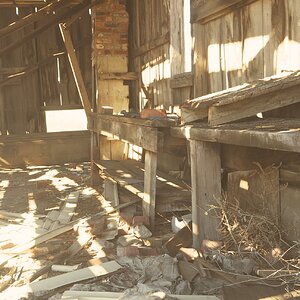

![[No title]](/data/xfmg/thumbnail/38/38720-f0f83c1b09a42065eefec8923841d54d.jpg?1619738701)
